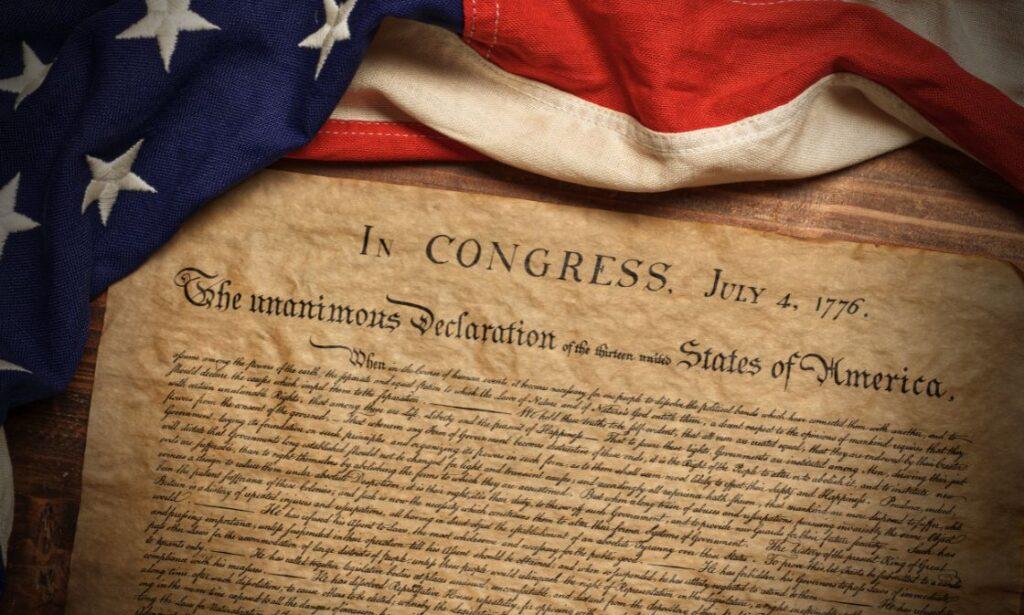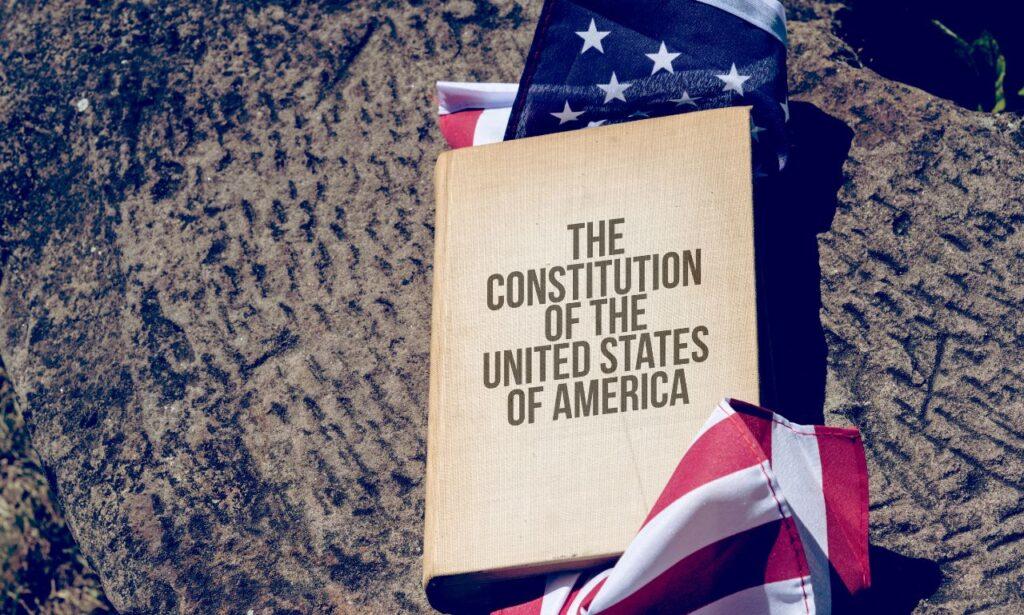The United States Constitution stands as a cornerstone of American democracy, laying the foundation for the nation’s governance and protecting fundamental rights. This comprehensive guide delves into the intricacies of The United States Constitution, focusing on how amendments uphold individual rights, the scope of presidential powers, and the influence of landmark Supreme Court cases on constitutional interpretation.

Understanding Amendments: Safeguarding Rights
Amendments to The United States Constitution serve as a testament to the nation’s commitment to preserving and expanding individual liberties.
The Amendment Process: Evolution and Significance
The Constitution’s framers envisioned a flexible document that could withstand the test of time. Through the amendment process, exemplified by the ratification of the 19th Amendment granting women the right to vote, we witness the evolution of American democracy. This process reflects a profound commitment to incorporating new perspectives and addressing injustices as society advances.
The Bill of Rights: Safeguarding Fundamental Freedoms
- First Amendment: The First Amendment’s enduring relevance lies in its defense of free speech, press, assembly, religion, and petition. The Supreme Court’s rulings in cases like Brandenburg v. Ohio, where the court distinguished between inflammatory speech and incitement, demonstrate the complexities of safeguarding free expression while preventing harm.
- Second Amendment: Analyzing the Second Amendment involves understanding its historical context and contemporary debates. Cases like District of Columbia v. Heller have sparked discussions on the individual right to bear arms versus the government’s role in ensuring public safety, revealing the dynamic interplay between individual liberties and societal well-being.
- Other Amendments: Beyond the Bill of Rights, the Fourth Amendment’s protection against unreasonable searches and seizures has taken on new dimensions in the digital age. Cases like Carpenter v. United States have questioned how digital surveillance intersects with individual privacy. Similarly, the Fifth Amendment’s due process protections continue to evolve, impacting cases such as Miranda v. Arizona, which established the rights of criminal suspects during interrogations.
Balancing Rights: Constitutional Protections vs. Societal Interests
The Constitution’s role as a guardian of rights is exemplified in the delicate balancing act it performs. The First Amendment’s freedom of speech navigates between protection and accountability, as seen in cases like Snyder v. Phelps, where the court balanced free speech rights against the harms caused by offensive protests at military funerals. Balancing Second Amendment rights with public safety underscores the ongoing dialogue on responsible gun ownership.
Presidential Powers and Limitations in The United States Constitution
The office of the president is the embodiment of executive authority, yet it exists within a carefully crafted framework of checks and balances. Examining presidential powers and their limitations provides insights into the intricate dynamics of American governance.
The Executive Branch: Roles and Responsibilities
As head of state, chief executive, and commander-in-chief, the president’s multifaceted roles dictate policy and security decisions. Notable instances, such as the Cuban Missile Crisis, showcase the president’s influence in critical junctures.
Enumerated Presidential Powers: Commander-in-Chief, Veto, and More
Embedded in the Constitution are explicit powers granted to the president. The commander-in-chief role grants authority over the military, as demonstrated during times of war and peace. The power to veto legislation, as exercised by multiple presidents, serves as a vital check on Congress. Through examples like the veto of the War Powers Resolution by President Nixon, we gain insights into the president’s role as a policy influencer.
Checks and Balances: Constraining Presidential Authority
- Congressional Oversight: The Constitution’s framers built mechanisms to prevent unchecked presidential power. Congressional oversight, including impeachment, serves as a powerful tool to hold presidents accountable. Notable instances like the impeachment trials of Presidents Andrew Johnson, Bill Clinton, and Donald Trump demonstrate the constitutional balance of power.
- Judicial Review: The judiciary’s role in constraining presidential authority is exemplified by cases like Youngstown Sheet & Tube Co. v. Sawyer, where the Supreme Court limited President Truman’s authority to seize steel mills. Landmark decisions like United States v. Nixon, which compelled the release of the Watergate tapes, underscore the principle that no branch is above the law.
Critical Moments: Presidential Powers Challenged and Upheld
Throughout history, the limits of presidential power have been tested in moments of crisis. President Lincoln’s suspension of habeas corpus during the Civil War and President Franklin D. Roosevelt’s use of executive orders during World War II reveal the extent to which presidents have stretched their authority to address national emergencies.
Landmark Supreme Court Cases
Examining landmark cases unveils the profound influence these decisions have had in shaping the nation’s legal and societal landscape.
- The Judiciary’s Role: Central to American governance, the Supreme Court interprets the Constitution’s tenets. Its decisions reverberate through generations, setting precedents that guide law and society. Examples like Chief Justice Earl Warren’s court highlight the judiciary’s enduring significance in safeguarding constitutional principles.
- Marbury v. Madison: A cornerstone of constitutional interpretation, Marbury v. Madison established the doctrine of judicial review. This landmark case enshrined the Supreme Court’s authority to review laws’ constitutionality, shaping the very foundation of American governance.
- Brown v. Board of Education: Brown v. Board of Education marked a seismic shift in civil rights. By declaring racial segregation in schools unconstitutional, the Court set in motion a movement that transformed societal norms, challenging systemic racism and inspiring future battles for equality.
- Roe v. Wade: Roe v. Wade ignited discussions on personal autonomy and reproductive rights. This case exemplifies how the Court’s decisions resonate beyond the courtroom, influencing societal debates and public policies related to women’s health and choice.
- Other Notable Cases: Landmark cases like Citizens United v. FEC, which reshaped campaign finance regulations, showcase the Court’s influence in diverse domains. These decisions underscore how the Constitution’s interpretation molds the nation’s ever-evolving legal and social landscapes.
Case Studies: Amendments in Action
Exploring real-world instances of constitutional amendments in action provides tangible insights into their dynamic influence on modern challenges.
- First Amendment Case Study: In the digital era, the First Amendment’s protection of free speech encounters new complexities, as seen in debates over online content moderation and hate speech.
- Second Amendment Case Study: Amidst gun control debates, the Second Amendment’s tension between individual gun rights and public safety is evident, highlighted by discussions on mass shootings and background checks.
- Fourth Amendment Case Study: Digital privacy issues illuminate the Fourth Amendment’s adaptation to technological advancements, as exemplified by cases like Carpenter v. United States on warrantless cellphone tracking.
- Presidential Power Case Study: Case studies on executive orders during national emergencies shed light on the extent of presidential authority and the delicate balance between executive action and congressional oversight.
Contemporary Relevance and Challenges in The United States Constitution
This section delves into how constitutional principles continue to shape and adapt to the complexities of the modern age.
Constitution in the Digital Age: Online Privacy and Expression
In the era of digitization, the Fourth Amendment’s protection against unreasonable searches faces new frontiers. Cases like Apple Inc. v. FBI exemplify the clash between personal privacy and national security, highlighting the Constitution’s need to adapt to the challenges of digital surveillance and data privacy.
Debates Over Constitutional Interpretation: Originalism vs. Living Constitution
Interpretive perspectives evolve with societal changes, shaping Supreme Court decisions. The ongoing clash between originalism and the living constitution approach influences landmark cases like Obergefell v. Hodges, influencing debates on LGBTQ+ rights, healthcare access, and voting regulations.
Challenges to Civil Liberties: National Security and Civil Rights
Post-9/11 realities thrust civil liberties into scrutiny. Balancing national security imperatives with civil rights, exemplified by cases like Hamdi v. Rumsfeld, tests the Constitution’s equilibrium. Instances like the USA PATRIOT Act underscore the delicate line between government authority and individual liberties.
Presidential Authority in Modern Politics: Polarization and Executive Actions
Deep political polarization places presidential authority in sharp focus. Controversies surrounding executive orders on immigration, climate change, and pandemic response reveal the Constitution’s resilience in maintaining checks and balances amidst ideological divisions. Trump v. Hawaii underscores how the Constitution shapes executive actions during societal fractures.
We reflect on the intricate interplay between constitutional amendments, the scope of presidential powers, and the legacy of landmark Supreme Court cases in The United States Constitution. We emphasize the enduring significance of these elements in shaping the United States’ democratic fabric. Encouraging readers to actively engage with the Constitution’s complexities, we underscore its perpetual influence on American governance and society, inspiring ongoing exploration and critical analysis for generations to come.
Also, Read: Filing for Divorce in California without a Lawyer






